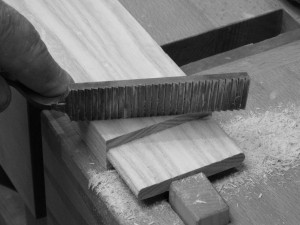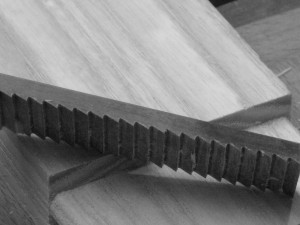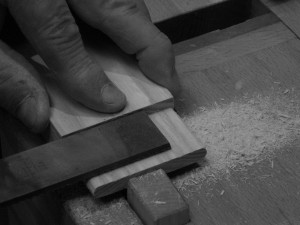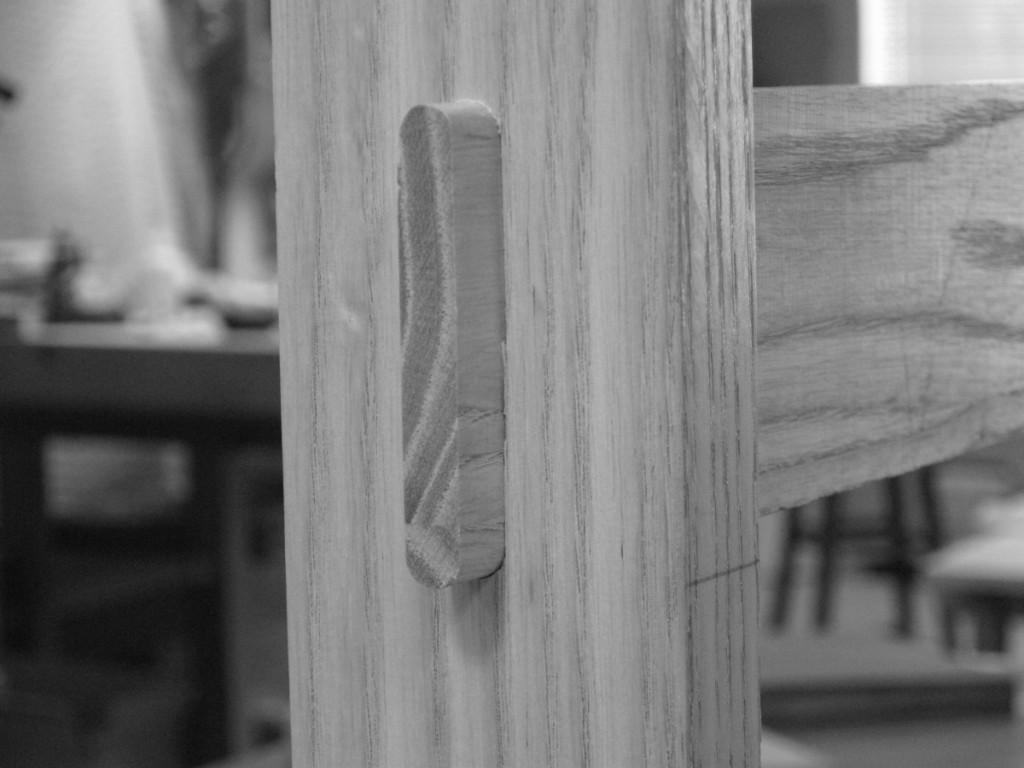‘Floats’ have been made and used for centuries. Simple tools, they are a cross between file and a saw, designed to remove material evenly from a surface while leaving it flat. You may be familiar with the ‘planemaker’s’ floats, used in the heyday of wooden plane making to flatten and refine the plane’s bed and other surfaces that were chopped out of solid blocks of wood. Floats have excellent uses in basic joinery, too.
Floats resemble files, except that instead of lots of little ‘teeth’ the float typically has a row of teeth from front to back, each tooth extending across the width of the steel, shaped about like a rip saw tooth in cross section. The teeth act like a row of chisels, each taking off a little bit as the float is passed over a surface.
If you know how to shape and sharpen hand saw teeth, you can make your own floats — although speaking from experience it’s a little tedious to do so. I have a joinery float that I purchased from Lie-Nielsen a while back that I have been very happy with and recommend highly. It’s a real boon when adjusting the fit of tenons, and can be used in other circumstances as well. These have to be sharpened occasionally, which is accomplished with the use of a 6″ double extra-slim taper saw file. The L-N tool I use is their model #FF-T, face float Push .
L-N provides them in ‘pull’ configurations as well as different shapes and sizes. For an online how-to article about making floats, check this out. The author is dealing with narrow floats here, but the principles are the same and his techniques are sound.




